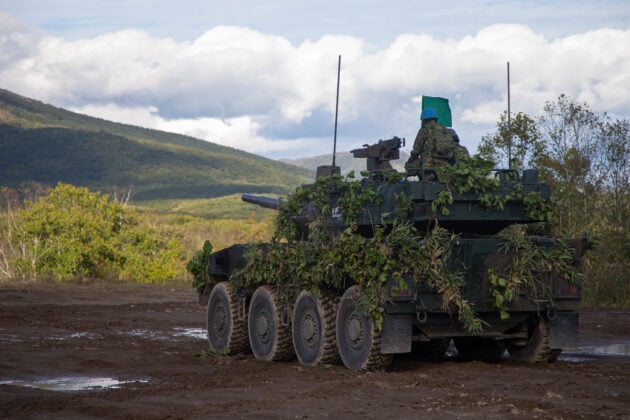
Japan’s Ground Self-Defense Force (GSDF) is planning a major organizational restructuring, with two new large-scale formations expected to be established in fiscal year 2026.
According to media reports, the plans include elevating the existing 15th Brigade on Okinawa to a division and consolidating the JGSDF’s elite special operations units into a dedicated brigade.
The restructuring is part of broader efforts to adapt Japan’s ground forces to evolving regional security challenges, particularly in the southwestern island chain, where tensions with China have increased in recent years.
The JGSDF’s 15th Brigade, based in Naha, Okinawa, is currently responsible for the defense of Japan’s southwestern territory. Established in 2010 as the successor to the 1st Combined Brigade, it is one of eight independent brigades and falls under the Western Army Command. With roughly 2,300 personnel, the unit is relatively small, built around the 51st Infantry Regiment — which, despite its name, is battalion-sized.
The brigade also includes two reinforced companies stationed on Miyako and Yarayama islands, an air defense regiment with one light and three medium-range surface-to-air missile batteries, a logistics battalion, a reconnaissance company equipped with Type 87 armored vehicles, and a helicopter company flying CH-47 and UH-60 aircraft. It also fields communications, engineering, explosive ordnance disposal, and CBRN defense units.
Under the new plan, the 15th Brigade will be reorganized as a division — one of ten in the JGSDF — and its capabilities will be expanded. The upgrades include the addition of a second infantry regiment, the replacement of the existing reconnaissance company with a new unit equipped with Type 16 wheeled armored vehicles and other advanced systems, and the strengthening of logistics and communications assets.
However, even after the transformation, the new division will field only about 3,900 troops, roughly equivalent to the size of a typical brigade in other militaries. Analysts believe the reclassification may be intended to elevate the rank of the division commander from major general to lieutenant general, allowing closer cooperation with the commander of the U.S. Marine Corps’ III Marine Expeditionary Force, who holds the same rank.
The JGSDF is also preparing to consolidate its elite units into a dedicated Special Forces Brigade. This formation will bring together the Special Forces Group based in Funabashi, Chiba Prefecture, and the Central Readiness Regiment from Utsunomiya, Tochigi Prefecture.
The Special Forces Group, modeled on units such as the U.S. Delta Force, the British SAS, and Germany’s KSK, consists of three operational companies with an estimated total strength of about 300 personnel. The Central Readiness Regiment, a mechanized infantry battalion equipped with armored and protected vehicles, has about 700 troops and supports special operations missions.
Currently, both units are part of the Central Readiness Force, established in 2007, which also includes the 1st Airborne Brigade and the 1st Helicopter Brigade, together numbering around 4,500 personnel. Details of the new Special Forces Brigade’s structure have not yet been disclosed, but the change is expected to enhance Japan’s ability to conduct specialized missions such as counterterrorism, hostage rescue, and high-value target operations.
While the Ministry of Defense has not fully explained the reasons for the reorganization, analysts note that it reflects Japan’s ongoing military modernization and the need to respond more effectively to potential crises in its southwestern island chain. The JGSDF currently has around 150,000 active personnel and 56,000 reservists, with five regional commands, nine divisions, eight independent brigades, and ten support brigades — including artillery, air defense, engineer, and helicopter units.
The new division and special forces brigade, expected to be operational by 2026, represent a shift toward more flexible, specialized, and strategically positioned ground forces.